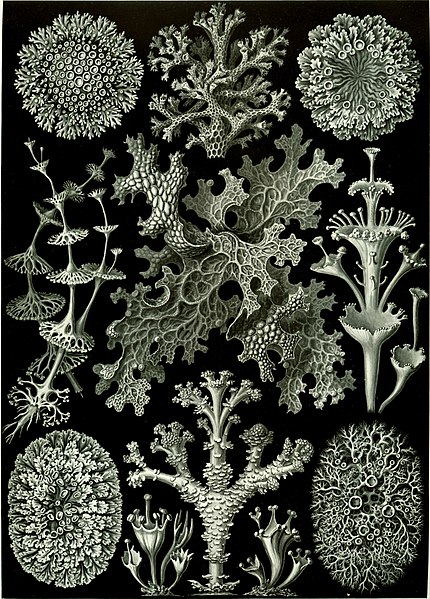Lacking of knowledge or presumed unexplainable situations often give rise to controversial hypothesis, or in the worst case to lies and pseudoscientific claims.
The extraordinary conservation of some carcasses of Mammoth, apparently only explainable by a rapid death and a rapid burial, brought to some speculation and wild guesses. Even more puzzling, elephants are seen as typical animals of warm climates and regions, such animal surviving in a cold, empty Tundra, seemed impossible.
During the 18 and 19th century, it seemed plausible, that Mammoths once lived in warm regions, and were killed and transported north by a great flood, where the corpses were deposited on ground, and became frozen. Even Charles Lyell, one of the founding father of geology, supported this “floater” theory.
 Fig. The most important Mammoth discoveries in Siberia.
Fig. The most important Mammoth discoveries in Siberia.The American historian and writer Charles H. Hapgood (1904-1982) used Mammoths to support his Pole Shift Theory or Earth Crust Displacement Theory.
As scientific support he cited mammoths and other Pleistocene animals, which seemed to show a rapid and catastrophic climatic change, explainable only by a catastrophic shift of the earth crust. After this theory, through the weight of the polar caps ice masses, or an enigmatic planet or asteroid, the relative position of the poles changed so suddenly, that the animals travelling on the continent, where transported from a temperate, or tropic climate so suddenly to a cold region, that they were literally shock frozen.
This, so Hapgood, happened not once, but often, and cyclic:
He reconstructed the timing and the locations of the catastrophic shifts of the polar ice capes:
90.000 B.C. Alaska
50.000 B.C. Norway
12.000 B.C: Hudson Bay
0 B.C. North Pole
Modern glaciological survey and analysis of ice cores show that the ice masses on the South Pole are at minimum 2 to 3 million years old, they on Greenland at least 120.000 years, they surely changed extensions, but they never disappeared completely. So one of the strongest arguments by Hapgood, is not supported by scientific measurements. From the geological view, he also fails to explain how it should be possible, that the entire crust of the earth can flip on the (heterogenic) mantle so easily.
We also have to relativities the claim, that the bodies were frozen. The found Mammoths are never found in ice, especially not in glacier ice, a common misconception. Mummies occur in frozen silt, which contains local ice lenses or wedges, of secondary genesis. This ice maybe plays an important role in the desiccation and preservation of the carcass, as moisture, migrated from the body and frozen outside.
A different approach to support their claims is used by creationists. They see Mammoths as scientific prove of a flood, presumably Noah’s flood.
The most naive approach is to pretend the enormous number of found carcass and fossils are due a mass kill of a single (flood) event. Dating showed that ages of the carcasses reach at least from 29.000 to 4000 y B.P. (but you can still pretend that radiocarbon dating doesn´t work).
As we have seen also the affirmation, the mammoth needed a rapid burial (a common creationistic claim) is not necessary. Small carcasses, like from the mammoth calf “Dima” (discovered 1977) could cool quickly. This specimen most probably drowned in a small pound, and the cold mud cooled the carcass and prevented entirely decomposition.

Animals died at the end of the summer, could become frozen during winter, and then subsequently buried during spring. It’s important to note, that sediment erosion and deposition during Ice ages differed considerably from modern sedimentation processes.

Fig. Watersatured mud "flowing" down hillside. The lack of a continues vegetation cover in the Mammoth steppe maybe caused strong redeposition of glacial sediments during snowmelt in spring.
But unfortunately, for most of the reported (historic) mammoth-discoveries, despite description, surrounding sediments or other paleontological hinds are not or only poorly mentioned – in fact the causes of death of most specimen are unknown, and the taphonomy of large carcass in Permafrost is still poorly understand.
A chapter for it’s own is the climate and the vegetation in Siberia during glacial periods. It is a misconception to compare the modern Tundra or Taiga with the Mammoth steppe, and claim that the productivity of this landscape was to poor to sustain large herbivores. The Mammoth steppe was a vegetation type that mixed cold tolerant with dry tolerant plant species, with resulting high species richness. The dry climate and the lack of precipitation prevented a long snow cover, enabling longer periods of photosynthesis. Also it is highly probable that herbivores migrated between summer and winter.
References:
GUTHRIE (1990): Frozen Fauna of the Mammoth Steppe – The story of Blue Babe.




















 Ammonites, characteristic fossils for the Mesozoic, and the most appreciated fossils by Smith.
Ammonites, characteristic fossils for the Mesozoic, and the most appreciated fossils by Smith.





